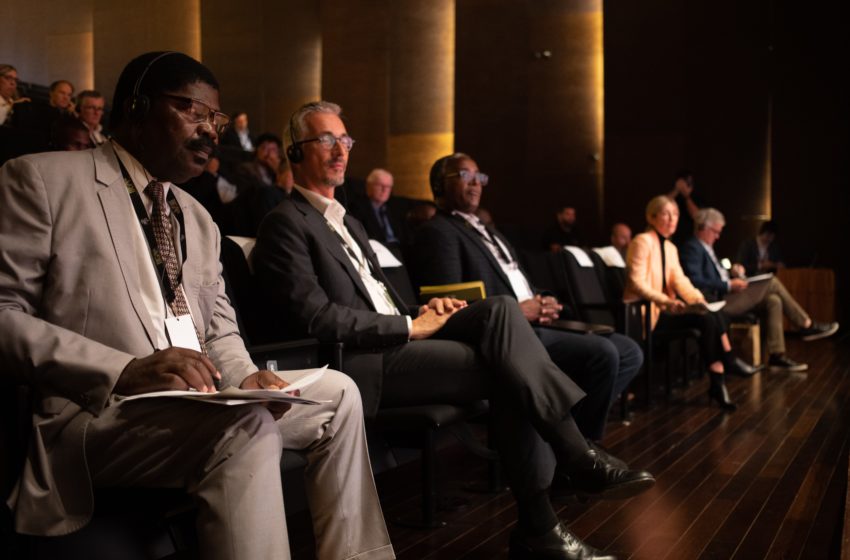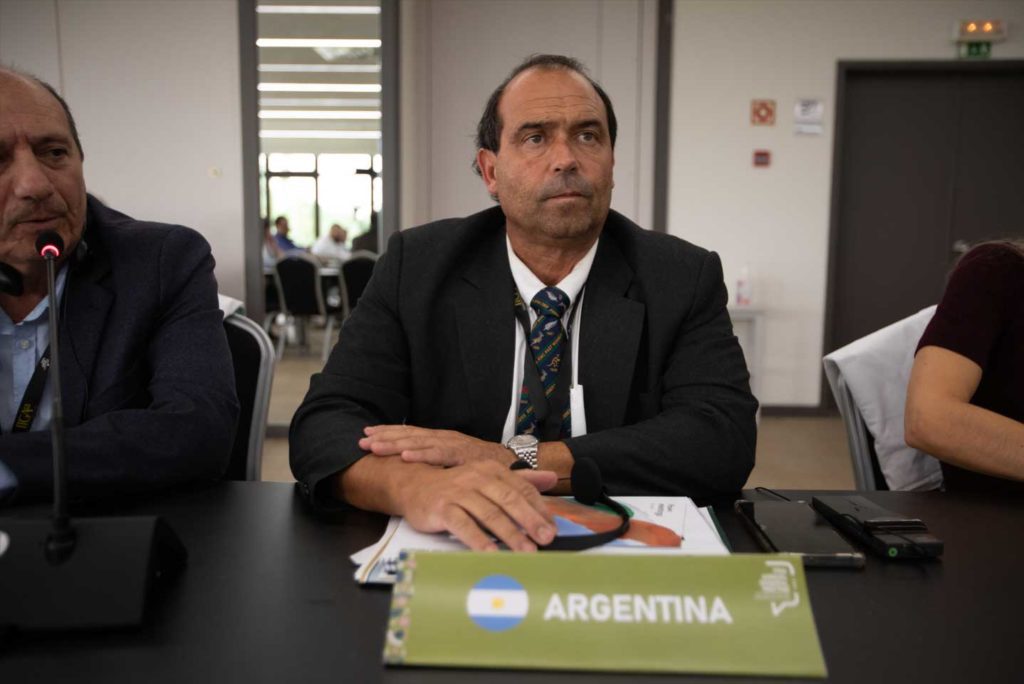Contemplating the Future
- Leaf Print Edition
- December 1, 2022
- 0
- 8 minutes read


Tobacco growers gather in Portugal to debate the many challenges facing their sector.
By Ivan Genov
The year 2022 marked a return to in-person meetings for the International Tobacco Growers’ Association (ITGA). After successfully conducting regional conferences in the Dominican Republic for the Americas region and in Zambia for the Africa region in August, the ITGA held its annual general meeting (AGM) in Castelo Branco, Portugal—the organization’s secretariat headquarters.
The event was attended by tobacco growers’ associations from five continents—Africa, Asia, Europe, South America and North America—together with key industry stakeholders and local hosts. Participants included delegations from Argentina, Brazil, Bulgaria, India, Italy, Malawi, the Philippines, Poland, Portugal, Spain, Switzerland, the United Kingdom, the United States, Zambia and Zimbabwe. The three-day event featured an open session, during which a variety of topics were discussed—the latest leaf production dynamics, a global market overview, regulatory updates and three blocks dedicated to sustainable tobacco growing in Africa, the Americas and Europe. ITGA members shared the latest market information regarding their respective regions and highlighted the most pressing concerns going into the 2023 season. Among the frequently mentioned ones were the growing costs of production, unsatisfactory pricing and the importance of being included in major tobacco forums.
The Consumption Side
Euromonitor International provided an in-depth briefing dedicated to the global nicotine market. The market intelligence provider’s head of nicotine and cannabis research, Shane MacGuill, identified broadening of the nicotine universe, regulatory innovation (including sustainability) and the opportunities and threats created by Covid-19 as the key future consumption drivers. In 2021, the pandemic effects sent cigarettes to their best performance in years while the category accounted for 83 percent of the total tobacco value sales. With most regions likely to see both volume and value declines in their cigarette sales, the Middle East, Africa and China are where growth is most likely to come from in the future.
In the illicit sphere, sales are expected to rebound significantly in the short term as costs of living are growing rapidly in many markets. Currently, the countries with the biggest illicit penetration are Ecuador, Peru and Uganda. In emerging products, heated tobacco is seen as the leading reduced-risk format while nicotine pouches show significant potential, mainly driven by sales in the U.S., but starting from a lower base. The importance of sustainability is another key driver in the tobacco and nicotine universe. The growing focus on cultivation and its environmental impact; supply chain emissions, widely accepted as environmentally damaging; and product waste, which is now in part tackled by the EU Directive on Single-Use Plastics, are among the key issues that will shape the regulatory framework. Finally, Euromonitor flagged the potential of legal cannabis, which is forecasted to reach nearly $100 billion in sales by 2026, according to company estimates, with focus on the U.S. and Germany as key examples of how the newly emerging industry could take shape.
The Production Side
After a sharp drop in 2020, 2021 marked a slight rebound in production for the biggest tobacco variety, flue-cured Virginia (FCV). This was largely driven by production increases in the U.S., Brazil and Zimbabwe, coupled with good weather conditions and revival of trade after the initial waves of Covid-19. In 2022, further production growth was registered, but this was primarily triggered by a 110 million kg increase in China. The biggest producer of FCV, excluding China, is Brazil, where the season concluded with 60 million kg of FCV less than the year before, with production costs up nearly 30 percent. Projections for 2023 suggest that China will keep the 2022 production levels while Brazil will also increase its FCV outputs, which could lead to additional growth on a global level. Pricing is showing an upward trend in some of the biggest markets for FCV, but the rapid growth in production costs is the biggest concern flagged by most ITGA member associations. As inflation and unstable supply chains are likely to continue shaping trade in 2023, this issue is likely to persist in the medium-term to long-term.
The trajectory for burley tobacco is downward. Production levels have been consistently declining in the past three years to four years. In contrast, for 2023, leading merchants expect notable production growth for burley in Africa, bringing the global quantities closer to the 500 million kg mark. Whether this forecast will materialize remains an open question. A market of particular importance for burley, Malawi experienced a difficult season. Sales were just under 70 million kg, down from 104 million kg the year before, representing a more than 30 percent drop on a yearly basis. The average price of $2.03 meant that total proceeds for the sector were only 7.7 percent down in comparison. The Tobacco Association of Malawi has indicated that 2021 and then 2022 have recorded a high increase in input prices because of Covid-19-related logistical developments and the impact of the Ukraine crisis, with fertilizer prices almost doubling. Fertilizers will be a big factor going into 2023 as well. In the U.S., another important producer of burley, growers indicated that interest in the variety is rapidly decreasing. Although some have diversified into other tobacco varieties, such as dark air-cured for the growing popularity of smokeless products, next season’s production is likely to register a double-digit year-on-year decline.
Focus on Other Markets
The AGM also shed light on some of the smaller markets that do not often enter the spotlight. For example, in the Philippines, production currently stands at 46 million kg, with an expected rise of 3 million kg going into the 2023 season. During the current crop, at least 4 million kg were lost due to rains. In Italy, the season was particularly difficult, with the rising cost of gas, fertilizer and power impacting production. A significant number of farmers took a sabbatical year while climate was hot and dry with several thunderstorms impacting production. The situation in the wider European region is also difficult. In the span of a decade, production went down drastically, with little help for growers on a regional level. Recently, the war in Ukraine has seriously been affecting pricing and availability of fertilizers. Shisha has arisen as a new opportunity for EU growers, especially in Poland.
Special attention was also paid to Ukraine, where the war has a significant impact on the larger agricultural environment. According to U.N. data, a significant number of markets depend heavily on agricultural commodities from Russia and Ukraine while the wheat dependence of many African and other least developed markets is also noteworthy. In addition to the fertilizer shortage and availability issues, big tobacco manufacturers have large exposures of their cigarettes and heated-tobacco portfolios to Russia and Ukraine, making supply chain complications even more pressing.
Election of New ITGA President and Future Objectives

Among the important outcomes of the ITGA’s 2022 AGM was the election of Jose Javier Aranda as the new association president. Aranda belongs to a family of farmers with roots and traditions in Argentina’s Lerma Valley. His ancestors were among the first Virginia tobacco producers in Salta Province. Currently, he serves as the first member of the Camara del Tabaco de Salta, a founding organization of the ITGA and secretary of the Cooperativa de Productores Tabacaleros de Salta. His leadership experiences are built on 16 years of action in the representative entities of the Salta producers.
Going into next year, ITGA members highlighted the importance of maintaining and strengthening communications with already scheduled regional meetings in Africa, America, Asia and Europe. The ability to sit in all meetings where the future of the sector is being decided, including meetings hosted by the World Health Organization, is among the goals of the new president. The multiple challenges facing the most vulnerable part of the supply chain necessitates the close cooperation between associations and major industry stakeholders to continue, so the sustainable future of millions of people taking part in tobacco growing can be ensured. Finally, growers agreed that tobacco should be grown in a sustainable way, respecting the environment and making sure all processes involved in production are fully compliant.

